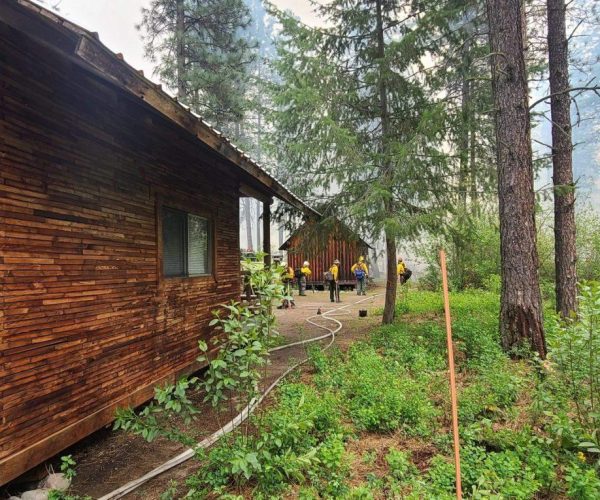ABOUT
The Fire Networks work to restore relationships between people and fire—developing viable fire cultures—because we believe that is the best way to address the root causes of our current wildfire challenges. As retired USDA Forest Service researcher Sarah McCaffrey reminds us: “Fire is a biophysical process, but fire management is a social one.” Too often, our wildland fire challenges are framed solely around vegetation problems–“our forests are out of whack” — that leads solely to fuels management solutions. If instead, we frame the challenge as “our culture of fire is broken” that leads to a more nuanced solution set—one where people are at the center and where many more pathways to better fire outcomes are legitimized.

PARTNERS
We work with place-based leaders as well as people who work for agencies and institutions at regional, state, and national scales. Our partners have a range of affiliations: Tribal governments and members, businesses, non-profit organizations and universities, fire departments, government agencies, private landowners and engaged residents. Interests are equally varied, and this has helped us build strong, resilient networks.

History
The origins of the partnership date back to the severe wildfire seasons in 2000, the Cerro Grande wildfire in NM, and the resulting National Fire Plan. To help implement the 10-year Comprehensive Strategy, the federal agencies looked for a partner – The Nature Conservancy – with national reach and local, community-based connections and projects to help build a network of fire collaboratives, facilitate training, and expand outreach opportunities. This led to a series of cooperative agreements between USDA Forest Service, the Department of the Interior and The Nature Conservancy which have supported our work since 2002. For more than two decades, the Fire Networks have both informed and supported key federal fire initiatives, including the National Cohesive Wildland Fire Management Strategy (Cohesive Strategy), and most recently, Confronting the Wildfire Crisis, a 10-year strategy that the Forest Service launched in 2022.
2002
Fire Learning Network (FLN) launched to support collaboratively led planning, learning, and implementation in fire-adapted landscapes.
2008
Prescribed Fire Training Exchanges (TREX) emerged as FLNs working in the Great Plains sought to build prescribed fire capacity.
2013
Fire Adapted Communities Learning Network (FAC Net) applied the learning network model to communities embedded in landscapes that burn.
2015
Indigenous Peoples Burning Network (IPBN) began bringing together those seeking to reinvigorate traditional fire cultures.
Our Vision
We envision a future of viable fire cultures across the country, where landscapes and communities are resilient to wildfire:
Where fire once again plays its fundamental role as an ecological and cultural process.
Where communities are taking action and preparing for wildfire.
Where the workforce welcomes myriad viewpoints, skills and experience.
Where people who live within and depend on fire-adapted ecosystems have a role, voice, and shared responsibility for their relationship with fire.
Our PRINCIPLES AND VALUES
Fundamentally, collaboration is built on trust. And trust is built upon a series of honorable acts. We support collaboration as an ongoing process, involving nurturing relationships, peer learning, and work across boundaries and jurisdictions, while focusing on results partners want to achieve together.
The practice requires being nimble, adaptive, and responsive to change.
Adaptive capacity is vital. Fire historian Stephen Pyne has said, “Our nation does not have a fire problem. It has many fire problems, and they require different strategies.” We recognize there is not a one-size-fits-all approach; every community’s journey to living better with fire is unique, and it changes through time. Our various situations require a range of options and capacities—and flexibility. We can only achieve a vision for living better with fire by engaging with and listening to the local communities most impacted by fire.


